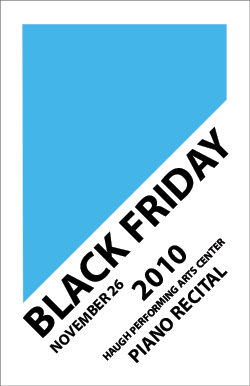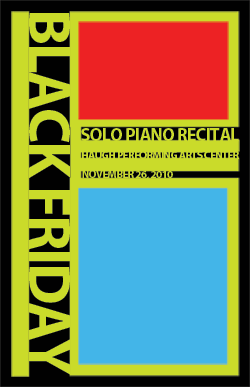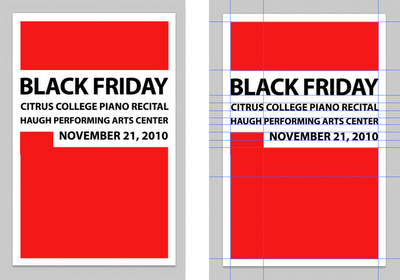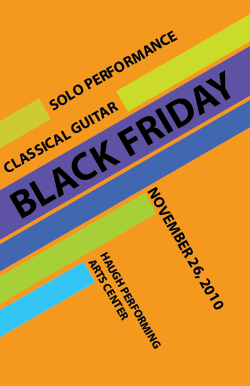(1) Must use three out of four of layouts illustrated below. (2) Use guides and proper angles. (3) CMYK 11in x 17 in at 150 pixels per inch (4) Use Kuler to limit color choices and create a color identity for poster (5) Imagery for posters can be abstract, photographic, musical notes, flowers, clouds, musical instruments, a drawing, etc.. Be creative.
POSTER #1 Use the piano images to make the Piano poster.
POSTER #2 Use construction paper or card board to make visuals for either the Drum or Wind poster.
POSTER #3 Use your own image or creativity to make the image for either the Drum or Wind poster.
45 Single Direction

Vertical/Horizontal

Horizontal

30/60

Create 3 different posters with different design ideas.
choose one version illustrated above and layout info listed below.
COLOR SPACE: CMYK
Size: 11in x 17in
Resolution: 150px/in.
Resolution: 150px/in.
KEEP IN MIND WHAT WILL BE EVALUATED
• Use of the rule of thirds
• Use of rulers and measuring the space
• Use of the guides
• Use of a hierarchy with text (different scale/size of text depending on info represented)
• Limit color choices to give poster an identity (Recommended use Kuler to choose colors)
• Use of the rule of thirds
• Use of rulers and measuring the space
• Use of the guides
• Use of a hierarchy with text (different scale/size of text depending on info represented)
• Limit color choices to give poster an identity (Recommended use Kuler to choose colors)
Info to be included in three posters.
1.
Spring Piano Concert
Showtime:Location: Sophia B. Clarke TheaterAdmission: $12, Seniors, Students & Children under 12 $9, Mt. SAC Students with ID $62.
Spring Wind Ensemble Concert
Showtime:Location: Sophia B. Clarke TheaterAdmission: $12, Seniors, Students & Children under 12 $9, Mt. SAC Students with ID $63.
